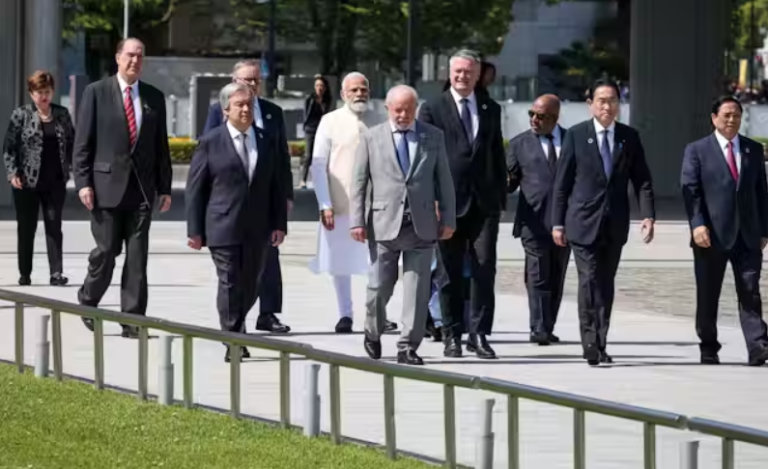A few weeks ago, I had an opportunity to attend a workshop on ‘cyber resiliency’. This article discusses some of these lessons learnt from that workshop to strengthen India’s Cyber Surakshit Bharat mission. The mission is a first-of-its kind national initiative by MietY, Govt. of India in collaboration with industry consortium to educate and build capacity across the nation to address growing cyber security challenges.
India’s Surakshit Bharat campaign for safer and more secure smart cities is a complex challenge that goes beyond cyber security alone. This article is a collection of reflection of ideas and strategies of India’s youth and an attempt to responsibly communicate the voice of a young citizen to build a resilient digital future for all.
Challenges and Gaps in Building Surakshit Bharat
In order to develop safer and sustainable smart cities across the nation, it is imperative to address the concerns of the future of varied stakeholders. Let us first understand the concerns related to digital transformation of various stakeholders.
1. Citizens: Finding the right balance between privacy rights and data-based protective measures remains hard for inhabitants of such smart ecological systems. Lack of public awareness regarding cyber-threats and safety measures hampers their involvement in ensuring the security of their own cities.
2. Governmental decision makers and policymakers: Government officials and policymakers hold the power and authority to make decisions, incharge of resource allocation,strategic planning, and face the unrelenting problem of balancing investments between competing needs. Cyber security, disaster management, and infrastructure development all require significant resources, necessitating careful thought and long term vision.
3. Theory-Practice Gap: One major problem concerning the educational system and educators has been to keep pace with rapid advancements of technology, connecting the dots between theoretical progress in the cyber security research landscape and its application in the real world. This leads to research findings that rarely translate into curriculum, lesson plans, and pedagogies.
Although all these challenges create significant difficulties for practical implementation, these gaps can be filled. Attending an active experiential learning workshop led and facilitated by Prof. Balaji Kalluri has equipped me with the core foundational concepts and terminologies relevant to risk and resiliency, and a systematic approach to carry out a cyber-physical risk analysis in smart cities as a part of my digital literacy course at FLAME University. The impending gaps in realizing the nation’s mission has kindled my interest to deeply reflect on the systemic issues in our ecosystem for education, training, capacity building, and the need for experiential learning in navigating the complex socio-political and socio-technical landscape and building resiliency.
A Compendium of Strategic Solutions to Build Capacity for Cyber Surakshit Bharat Mission
I believe such an active immersive workshop has equipped me to develop future skills which are vital in shaping the CyberSurakshitBharat mission. Workshop mirrored real life situations combined with guided activities, fostered critical reasoning as well as collaborative problem solving and quick decision-making under pressure. These are the very attributes needed to solve the complex problems of the present and future such as cyber security, disaster management, sustainable urban planning among others. Moreover, such hands-on practical experiences foster active citizenship too. These exposures instill in people competence and confidence that will enable them to be engaged citizens who actively participate in national initiatives aimed at building capacity towards safer, smarter, and sustainable communities. Acknowledging the impending challenges in building capacity for a Cyber Surakshit Bharat mission, the following section is a compendium of solutions to build active citizenship from an active youth.
1. Solutions for citizens
To guide the digital transition of cities into a secure and sustainable urban environment, it is important that citizens are equipped. It is needless to state that active citizen participation requires forging trust between governance and citizens. Below is how we can empower them:
1.1. Fostering Digital Literacy from an Early Age: The integration of cyber security consciousness and digital literacy courses into our curriculums would produce responsible digital citizens at a young stage, giving them enough knowledge to keep themselves protected in a digital world. They will be better prepared to spot risks and prevent them by realizing likely dangers
1.2. Encouraging Citizen Participation Culture by Public Awareness Programs: Utilizing different media platforms for public awareness campaigns can inform citizens about the following. This includes cyber threats and safe online behavior, preventive measures for ensuring own safety within urban infrastructure systems, activities that promote social cohesion, wellbeing and sustainability within communities
2. Solutions for Researchers and Academia
2.1. Curriculum Integration: Syllabus integration of the existing curriculums in engineering, urban planning, and computer science with cyber security, data analysis, and sustainability concepts can make students’ skillset more diverse. This holistic method makes them take on issues from different angles leading to all-rounded solutions addressing security and concerns [5]
2.2. Skill Development through Experiential Learning: The movement away from theoretical classroom teaching towards project-based learning as well as experiential activities such as workshops, simulations and internships can bridge the gap between theory and practice. Students are able to apply knowledge acquired through theory into practical situations which help them gain skills necessary for dealing with real world challenges. These include problem-solving, critical thinking, collaboration, and adaptation – all necessary attributes when it comes to maneuvering through the intricacies of the workforce for building safe & smart cities.
2.3. Industry Engagement: By collaborating with industry professionals, educational programs would reflect current industry needs and trends. Several ways this can be done include:
1. Industry expert guest lectures: The involvement of professionals in sharing their practical experiences and perspectives enables students to be exposed to the latest technologies and industry standards.
2. Industrial visits: Allowing students to make visits to appropriate industries helps them appreciate how theories are applied in practice.
3. Research partnerships with businesses: Students get a chance to solve real-life problems together with experienced specialists through working on joint projects. This promotes inventiveness and advancements towards tangible results.
3. Solution for Governance and Decision Makers
3.1. Data-Driven Decision Making: Governments can use data to prepare for disasters by examining weather trends, availability of resources and population distribution. This will enable them to come up with proactive response plans that would lessen the impact of possible disasters. Furthermore, data analysis could facilitate effective resource allocation during emergencies thus ensuring essential supplies reach those who need them most
3.2. Public-Private Partnerships : This approach allows the public sector to leverage the expertise, creativity and resources of private sector firms in addressing security and sustainability issues. In India, standardized frameworks should be put in place alongside strategic Viability Gap Funding , clear risk-sharing mechanisms, and long-term outcomes rather than just cost considerations only among others that can greatly transform it further. When public and private sectors join forces they are able to create more holistic solutions than either one sector working in isolation alone could produce
Disclaimer: The views presented in this article are entirely personal, of that of the authors, and doesn’t necessarily reflect the views of the institution.
Authors
-

Diya Madhusudan is a first year undergraduate student in FLAME University, majoring in Data science and Economics. Growing up in the Silicon valley of India, she piqued interest in information safety in creating safe and sustainable smart cities. She is passionate about learning and in coming years she is eager to develop required skills to contribute towards the nation's Cyber Surakshit Bharat mission.
-

Dr. Balaji Kalluri is an Assistant Professor in Environment Studies at FLAME University. He is a systems engineer turned urban futurist. He describes himself as a global citizen, seasoned professional, multi-disciplinary researcher, an innovator, and a passionate educator. He is the founding director of KUDOS, an urban innovation studio whose mission is to push the frontiers of innovation in guiding ‘urban futures’ towards large-scale just and sustainable transition. He is a recipient of several global awards, including the prestigious Innovation Fund Denmark’s post-doctoral fellowship (2019), Singapore Ministry of Education doctoral scholarship (2013), and ‘Redefining education through creativity in India’ awardee of the Council for Creative Education Finland (2023). He holds a PhD in Building Science from National University of Singapore (2017), Masters in Microelectronics Engineering from Birla Institute of Technology and Sciences Pilani (2009), and Bachelors in Electronics and Communication Engineering from Anna University (2006). He has a very good record of publications in high-impact, and peer-reviewed journals, conference proceedings, and book chapters. Before returning to India in 2021, he lived, worked, and traveled across 40 global cities, 11 nations and 3 continents



